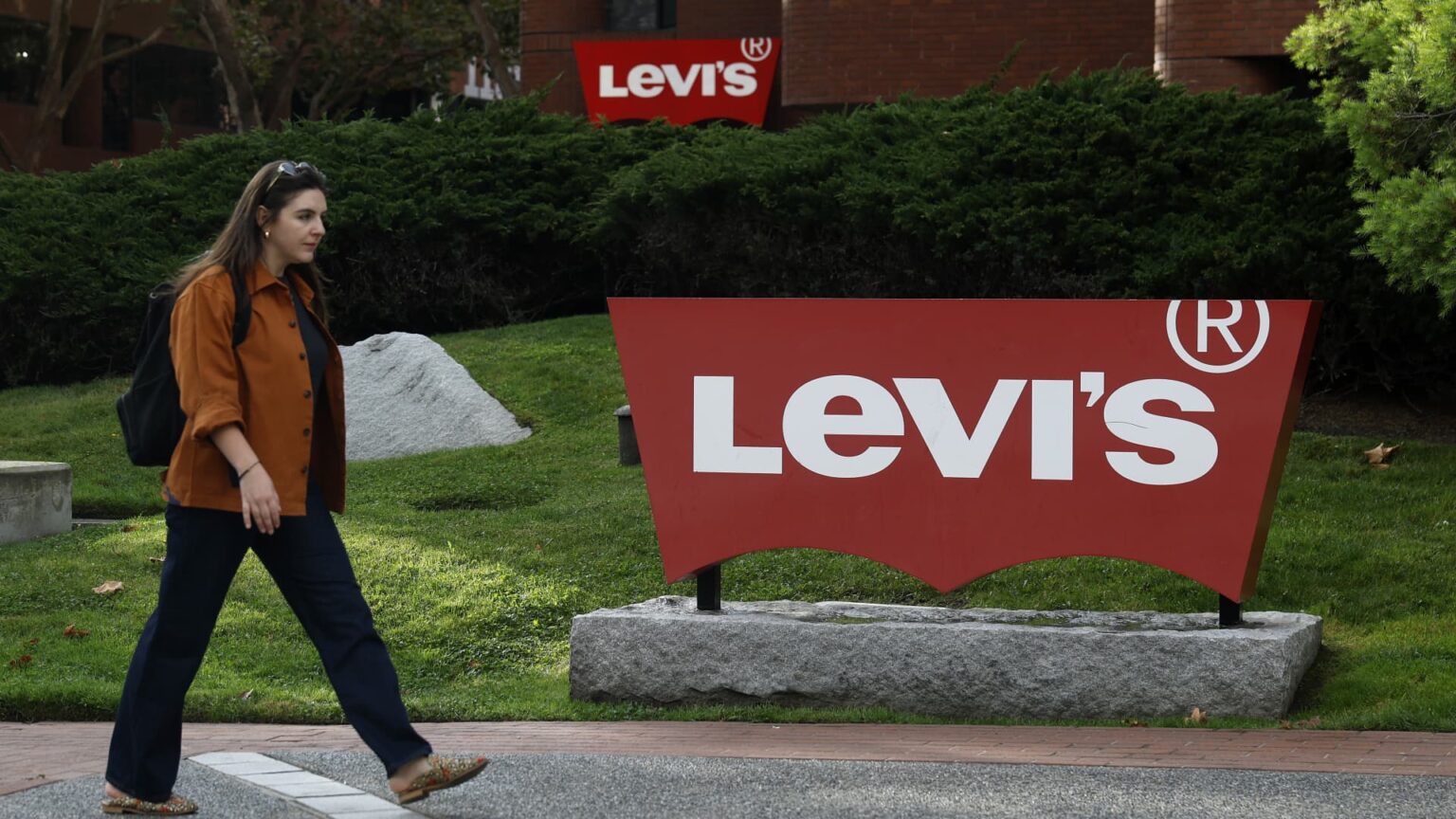Levi Strauss has reported a strong performance for its fiscal third quarter, surpassing Wall Street’s expectations despite facing higher costs from tariffs. The company’s gross margin improved significantly, aided by targeted price increases and a strategic shift towards direct sales, moving away from reliance on wholesalers. CEO Michelle Gass indicated confidence in demand, as the firm raises prices while still seeing robust revenue growth, prompting an upward revision of their full-year outlook.
| Article Subheadings |
|---|
| 1) Levi’s Financial Performance Exceeds Expectations |
| 2) Pricing Strategies and Revenue Growth |
| 3) Market Outlook and Future Guidance |
| 4) Shifting Sales Strategies and Consumer Trends |
| 5) Expansion Beyond Denim |
Levi’s Financial Performance Exceeds Expectations
Levi Strauss’s latest fiscal results show a net income of $218 million, equivalent to 55 cents per share, a significant increase compared to $20.7 million, or 5 cents per share, reported in the same quarter last year. This performance not only surpassed the analysts’ expectations of 34 cents adjusted earnings per share, but also reflected a revenue rise of 7% year-on-year, bringing total sales to $1.54 billion. Wall Street analysts had projected only $1.50 billion for the quarter, highlighting the company’s robust operational strength in a challenging economic environment amidst ongoing macroeconomic volatility.
Pricing Strategies and Revenue Growth
One of the core strategies behind Levi’s increased margin is its tactical approach to pricing. While the company has witnessed rising costs due to tariffs, it has also implemented price increases on select jeans and clothing items. CEO Michelle Gass emphasized the careful and strategic nature of these price hikes, mentioning,
“As we’ve been taking these targeted actions, we’ve not seen an impact to demand.”
This indicates a resilient customer base that values the brand’s quality, allowing them to continue operating without significantly hindering demand despite the price adjustments.
Market Outlook and Future Guidance
Following its successful quarter, Levi’s raised its full-year sales expectations to a 3% increase, revised from previous guidance of 1% to 2%. This outlook stands in stark contrast to prior predictions from analysts anticipating a 2.9% decline in sales. Moreover, their anticipated adjusted earnings per share range has been adjusted upward to between $1.27 and $1.32, suggesting improved financial health. Finance chief Harmit Singh remarked on the strength of demand, reinforcing the brand’s confidence amid cost pressures. They cautiously navigate potential ongoing macroeconomic challenges while remaining optimistic about their robust performance.
Shifting Sales Strategies and Consumer Trends
Levi’s has made substantial progress by selling directly to consumers rather than relying heavily on wholesalers. This switch has not only bolstered their margins but also allowed them to connect more intimately with their customers. During this quarter, direct-to-consumer sales grew by an impressive 11%, bolstered particularly by strong performance in the U.S. Meanwhile, women’s categories also showed a 9% increase, indicating effective marketing strategies that resonate with their target demographics.
Expansion Beyond Denim
To diversify its offerings, Levi’s has expanded its clientele beyond the traditional denim market. Currently, nearly 40% of the company’s business comes from clothing outside of denim bottoms. This diversification is being met with positive consumer reception, as evidenced by the 9% rise in profits of non-denim top categories during the quarter. By capitalizing on emerging fashion trends, Levi’s is strategically hedging against potential declines in denim popularity, further strengthening its market position.
| No. | Key Points |
|---|---|
| 1 | Levi Strauss reported better-than-expected financial results for the fiscal third quarter. |
| 2 | Gross margin improved to 61.7%, surpassing analyst expectations. |
| 3 | Targeted price increases have not adversely affected consumer demand. |
| 4 | The company raised its full-year sales and earnings guidance significantly following strong quarterly results. |
| 5 | Levi’s insightful pivot toward direct sales and product line expansion indicates strong growth potential going forward. |
Summary
Levi Strauss’s recent financial results illustrate the brand’s ability to navigate cost pressures while maintaining growth through strategic pricing and product expansion. The upward revisions in their full-year outlook reflect optimism in both their operational strategies and market demand. By continuing to adapt to consumer needs and focusing on both denim and non-denim offerings, Levi’s is positioning itself for sustained success despite economic uncertainties.
Frequently Asked Questions
Question: How did Levi’s perform financially this quarter?
Levi’s reported a net income of $218 million for the fiscal third quarter, outperforming expectations and reflecting a year-on-year revenue increase of 7% to $1.54 billion.
Question: What strategies is Levi’s employing to boost margins?
Levi’s has implemented targeted price increases on select items and is focusing on direct-to-consumer sales as a means to improve margins and reduce dependency on wholesalers.
Question: What is Levi’s outlook for the rest of the year?
The company has raised its full-year sales guidance to a projected 3% increase and its adjusted earnings per share forecast has also been revised upwards, indicating strong expectations for ongoing growth.


